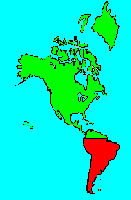SPECIES INFO
White backed stilt (Himantopus melanurus) is found in southern South America. This stilt has black wings and a white breast, belly, and rump. However, there is a large black area that begins behind the eye and extends down the back of the neck. The rest of the face is white.
The Howard and Moore checklist of 2003 placed this lifeform as a subspecies of Himantopus himantopus.Stilt genus (Himantopus) has some unusual shore birds with very long legs and very long straight narrow bills. This genus is open to much scientific discussion. Rosair and Cottridge in 1995 in their book dedicated to the waders of the world followed the approach below with two full Himantopus and one Cladorhynchus species:
Himantopus himantopus himantopus - S. Eurasia, Africa, and India
Himantopus himantopus mexicanus - United States to Peru and N. Brazil
Himantopus himantopus melanurus - Southern South America.
Himantopus himantopus knudseni - Hawaii
Himantopus himantopus leucocephalus - Australasia and Indonesia
Himantopus novaezelandiae
Cladorhynchus leucocephalus - West and South Australia
Monroe and Sibley in their 1993 checklist followed the following approach which has five full Himantopus species and one Cladorhynchus species:
Himantopus himantopus himantopus - Europe and Africa
Himantopus himanotpus ceylonensis - Ceylon (now named Sri Lanka)
Himantopus leucocephalus - Indonesia to New Zealand
Himantopus novaezelandiae - New Zealand
Himantopus mexicanus - kundseni - Hawaii
Himantopus mexicanus mexicanus - United States to North South America
Himantopus melanurus - Southern South America
Cladorhynchus leucocephalus - Australia
The unusual feature of both lists is that the term "leucocephalus" occurs twice in this very small family. In fact it occurs twice for life forms in the Australian region.
Stilts and Avosets (Family Recurvirostridae) is a family of very long-legged wading birds. There are seven to perhaps twelve species in the world, two of which are found in North America. These are long legged long billed species. (The species count confusion is mentioned in the genus text of Himantopus.)
The beginning student is warned that the genus Himantopus belongs here, but the genus Haematopus belongs with the oystercatchers.
Shorebirds (Order Charadriformes) are a group of 305 species of worldwide birds. While good fliers, they are much observed feeding along seashores and in the vicinity of inland bodies of water. Seagulls and sandpipers are typical representatives of this order.
There are many different families herein, and most authors end up with about 18 different families. Other groups included herein include the plovers, curlews, coursers, oyster catchers, jacanas, terns, phalaropes, plovers, stilts and avocets, skimmers, snipes, jaegers, and auks and puffins.
Aves contains about 8,650 different species of living birds known to science. Each year about one new species is discovered in some remote rain forest or remote island. In addition, scientists have been raising many subspecies to full species status which may raise the species count to 10,000. Birdlife recognizes 10,027 species as of 2011.
However, each year about one species goes extinct. The rate of extinction is increasing, and the rate of new discovery is decreasing, so that the number of bird species will soon begin to decline rapidly. Although different taxonomists would organize the birds differently, there are approximately twenty-seven orders of birds. These orders are broken down into about one hundred and fifty-five different families.
Recent research of the genetic structure of some of the shore birds and owls would indicate that the present organization of orders and families should have some modification.
The birds are a worldwide group of animals that are characterized by having the front limbs modified into wings that are used for flying. Perhaps the most unique feature of the birds is the feathers. These feathers are made up of a central support called a quill and a series of small filaments that are hooked together as barbs.
For many years it was believed that Archaeopteryx discovered in Bavaria was the oldest bird from about 150 million years ago. However, in l986, Sankar Chattterjee, a Texas paleontologist, reportedly discovered a bird in the genus Protoavis that lived about 225 million years ago.
When this project was begun in 1978, we used Austin & Singer for bird taxonomy. Since then, we have adopted many changes, but have kept some older concepts that are still found widely in the literature. Recently, we have used Clements and Howard & Moore. Very recently, we have used Monroe and Sibley for the higher taxonomy of the perching birds.
Backboned Animals (Phylum Chordata) are the most advanced group of animals on earth. These animals are characterized by having a spinal cord or backbone. Most members have a clearly defined brain that controls the organism through a spinal cord. Fish, amphibians, reptiles, birds, and mammals are in this phylum.
Currently, some taxonomists believe that the fish should be divided into two groups (sharks and regular fishes) and that there are some other primitive groups in the phylum such as hagfish or lampreys.
Animal Kingdom contains numerous organisms that feed on other animals or plants. Included in the animal kingdom are the lower marine invertebrates such as sponges and corals, the jointed legged animals such as insects and spiders, and the backboned animals such as fish, amphibians, reptiles, birds, and mammals.

